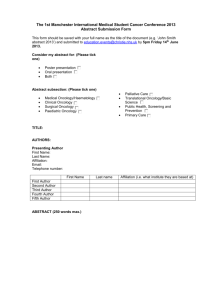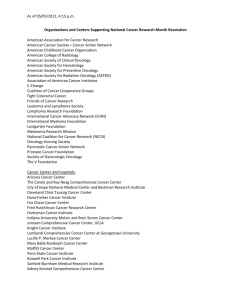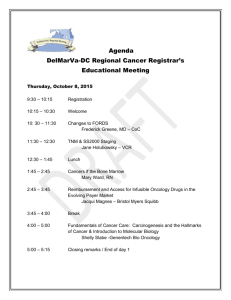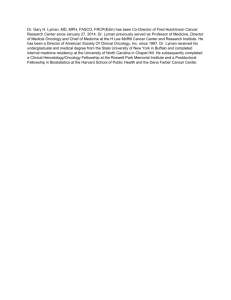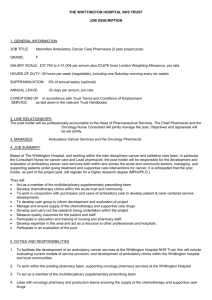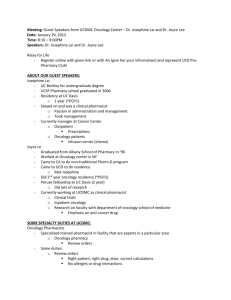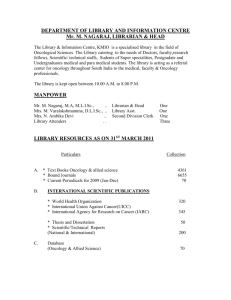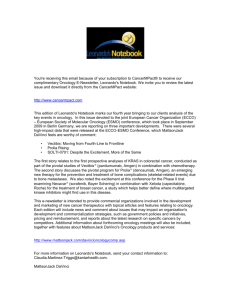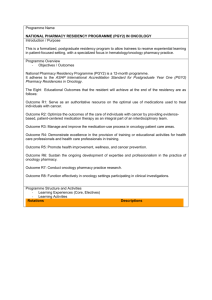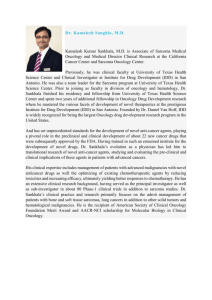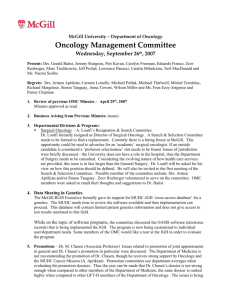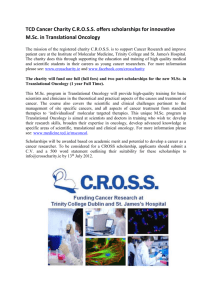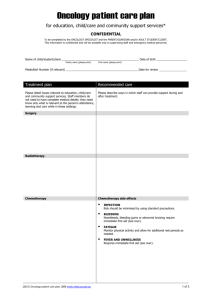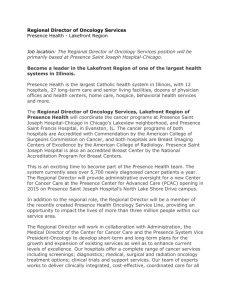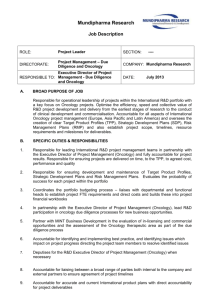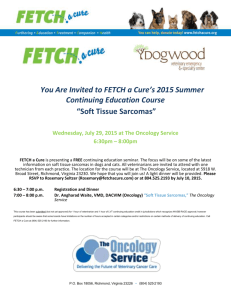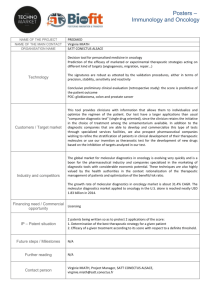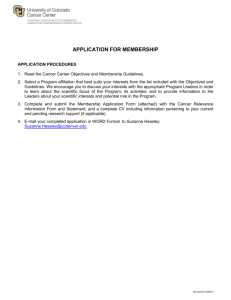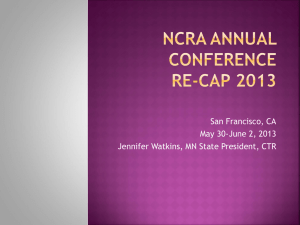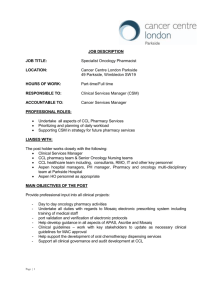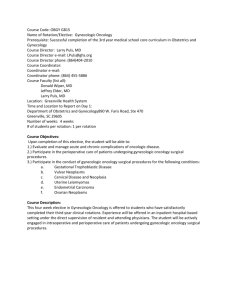This spring, I attended the XIV International Symposium on
advertisement
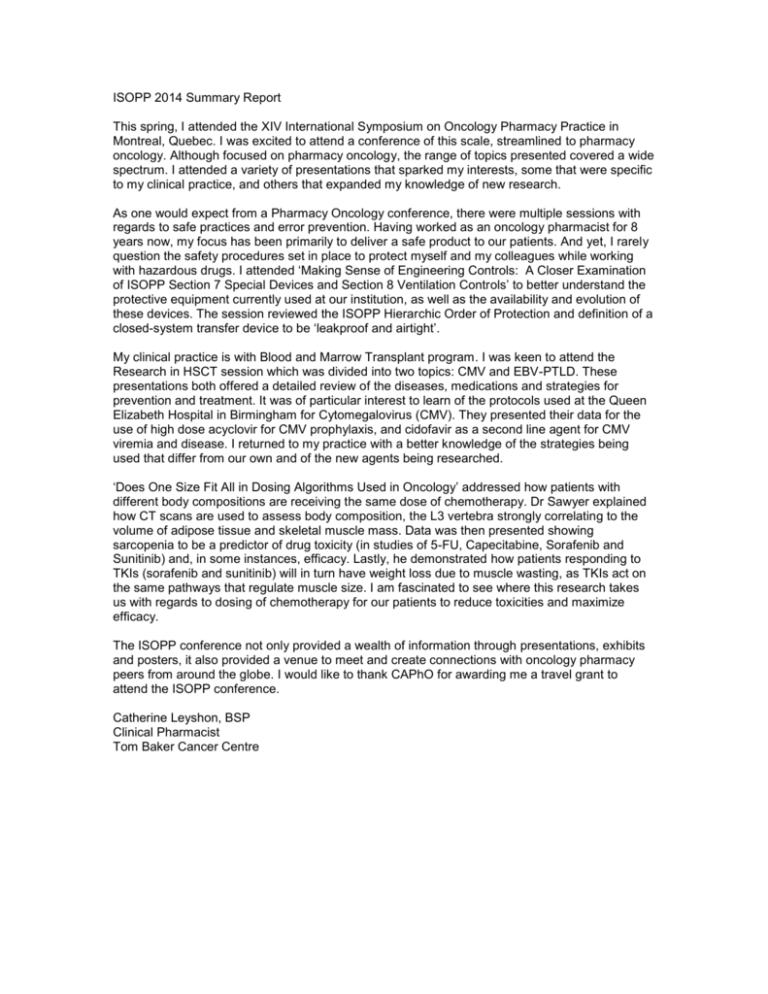
ISOPP 2014 Summary Report This spring, I attended the XIV International Symposium on Oncology Pharmacy Practice in Montreal, Quebec. I was excited to attend a conference of this scale, streamlined to pharmacy oncology. Although focused on pharmacy oncology, the range of topics presented covered a wide spectrum. I attended a variety of presentations that sparked my interests, some that were specific to my clinical practice, and others that expanded my knowledge of new research. As one would expect from a Pharmacy Oncology conference, there were multiple sessions with regards to safe practices and error prevention. Having worked as an oncology pharmacist for 8 years now, my focus has been primarily to deliver a safe product to our patients. And yet, I rarely question the safety procedures set in place to protect myself and my colleagues while working with hazardous drugs. I attended ‘Making Sense of Engineering Controls: A Closer Examination of ISOPP Section 7 Special Devices and Section 8 Ventilation Controls’ to better understand the protective equipment currently used at our institution, as well as the availability and evolution of these devices. The session reviewed the ISOPP Hierarchic Order of Protection and definition of a closed-system transfer device to be ‘leakproof and airtight’. My clinical practice is with Blood and Marrow Transplant program. I was keen to attend the Research in HSCT session which was divided into two topics: CMV and EBV-PTLD. These presentations both offered a detailed review of the diseases, medications and strategies for prevention and treatment. It was of particular interest to learn of the protocols used at the Queen Elizabeth Hospital in Birmingham for Cytomegalovirus (CMV). They presented their data for the use of high dose acyclovir for CMV prophylaxis, and cidofavir as a second line agent for CMV viremia and disease. I returned to my practice with a better knowledge of the strategies being used that differ from our own and of the new agents being researched. ‘Does One Size Fit All in Dosing Algorithms Used in Oncology’ addressed how patients with different body compositions are receiving the same dose of chemotherapy. Dr Sawyer explained how CT scans are used to assess body composition, the L3 vertebra strongly correlating to the volume of adipose tissue and skeletal muscle mass. Data was then presented showing sarcopenia to be a predictor of drug toxicity (in studies of 5-FU, Capecitabine, Sorafenib and Sunitinib) and, in some instances, efficacy. Lastly, he demonstrated how patients responding to TKIs (sorafenib and sunitinib) will in turn have weight loss due to muscle wasting, as TKIs act on the same pathways that regulate muscle size. I am fascinated to see where this research takes us with regards to dosing of chemotherapy for our patients to reduce toxicities and maximize efficacy. The ISOPP conference not only provided a wealth of information through presentations, exhibits and posters, it also provided a venue to meet and create connections with oncology pharmacy peers from around the globe. I would like to thank CAPhO for awarding me a travel grant to attend the ISOPP conference. Catherine Leyshon, BSP Clinical Pharmacist Tom Baker Cancer Centre
